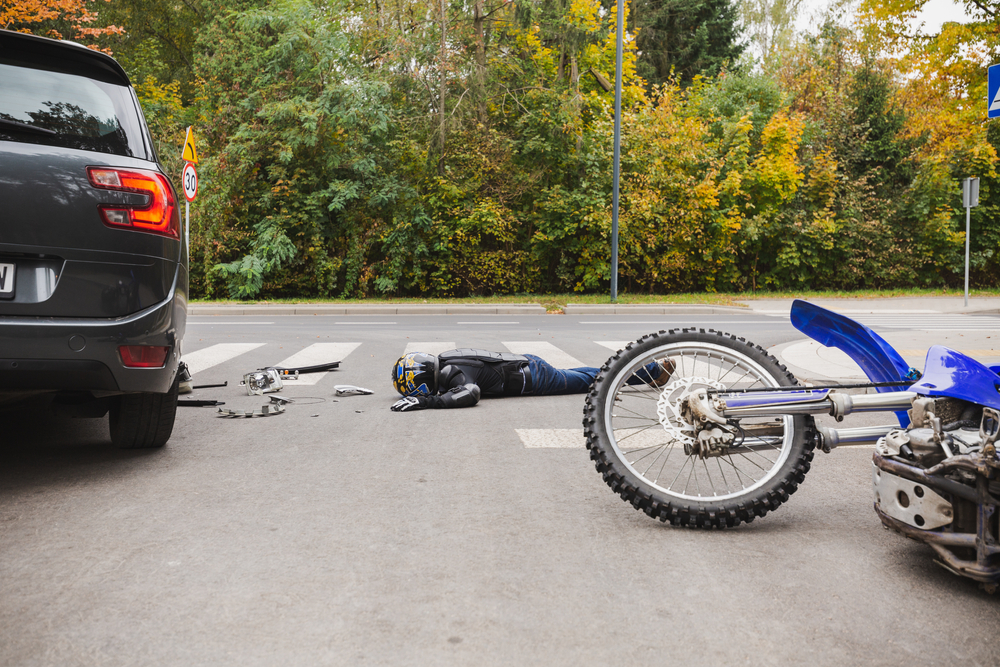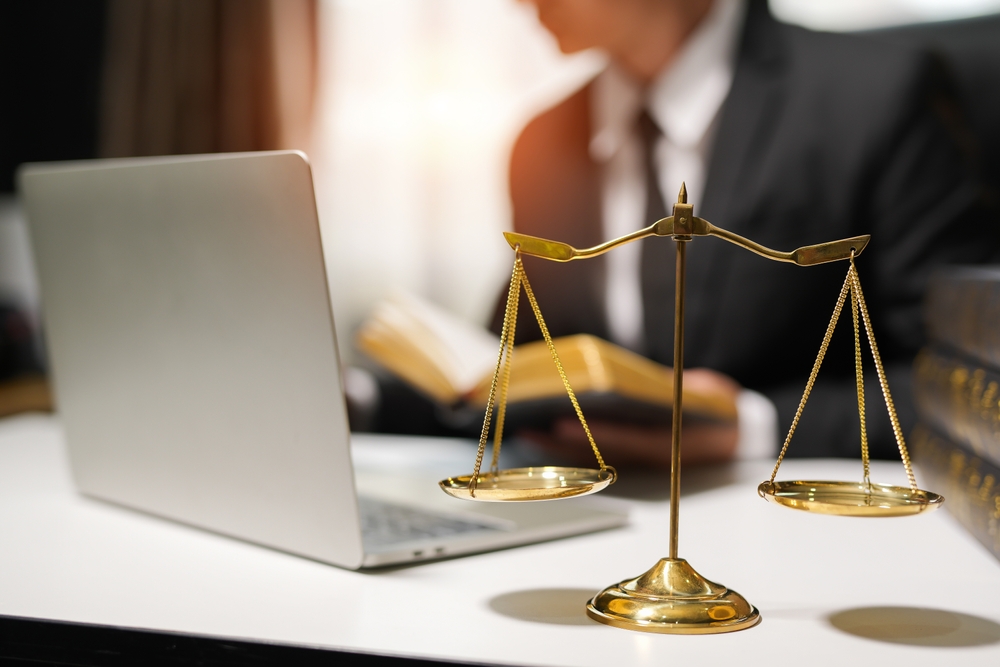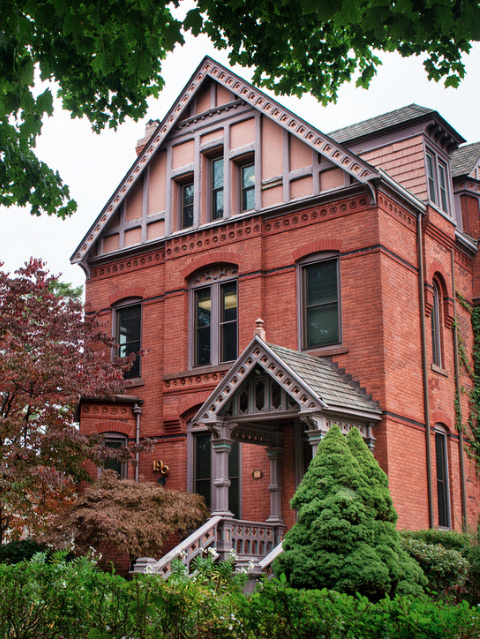Backover accidents happen more often than many people realize—and they can have devastating consequences. These incidents occur when a vehicle moving in reverse strikes a pedestrian, cyclist, or another vehicle. While most commonly happening in parking lots or driveways, backovers can happen anywhere vehicles reverse.
These crashes are especially dangerous for children, who are often too small to be seen in a vehicle’s blind spot. However, adults are not immune to sustaining injuries when a negligent driver backs over them.
Read on to learn more about backover accidents and who is at fault. If you suffered injuries or lost a close family member in a backover incident, contact a car accident lawyer near you today for a free consultation.
What Is a Backover Accident?

A backover accident occurs when a driver reverses a vehicle and hits someone or something behind them. These crashes often happen at low speeds but can cause serious or even fatal injuries—especially to pedestrians who have little protection.
Backovers that are caused by vehicle blind spots can be prevented by taking simple steps, like walking around the vehicle before backing up or installing a rearview camera. Still, accidents happen—and when they do, it’s important to know your rights.
According to crash statistics, more than 2,400 children are treated in emergency rooms each year after being hit by a reversing vehicle. Adults, too, are frequently harmed—accounting for over half of fatal backover accident victims.
These numbers highlight the importance of seeking legal representation when a careless driver’s actions hurt you or someone you love.
Common Causes of Backing Collisions
Backing collisions can cause serious injuries, especially to pedestrians and children. Even though these accidents often happen at low speeds, the consequences can be life-altering. Understanding the most frequent causes of a vehicle back over can help drivers take steps to avoid them—and help victims determine who may be at fault.
Blind Spots Behind the Vehicle
One of the leading causes of backover accidents is poor visibility caused by blind spots. Every vehicle has areas around it that the driver cannot see clearly, even when using mirrors. These blind spots are particularly dangerous when they’re located behind the vehicle—where children, pets, or small objects can go unnoticed.
Large vehicles like trucks, SUVs, and vans have even bigger blind zones. In fact, these blind spots can extend several feet behind the car, making it nearly impossible to see someone standing or walking close to the rear bumper.
Backovers that are caused by vehicle blind spots can be prevented by taking precautions such as walking around your vehicle before getting in, installing backup cameras, and using reverse sensors if available. But if drivers don’t take these steps, they may be held liable for any resulting injuries.
Distracted Driving
Distraction plays a major role in many types of car accidents—and backing collisions are no exception. When drivers shift their attention away from the road, even for a second, they may miss a person or object in their path. Common distractions include texting, checking GPS, adjusting the radio, eating, or talking to passengers.
In a parking lot or residential area, this kind of lapse in attention can have devastating consequences. A driver might assume the coast is clear without looking, or they may not notice someone walking behind their vehicle. Unfortunately, children and elderly pedestrians are often the ones who suffer most in these situations.
Even when reversing at low speeds, distracted driving significantly increases the chances of a backover accident—and victims may be entitled to compensation if it can be shown that the driver wasn’t paying attention.
Pedal Confusion
Pedal confusion is another common factor in backing collisions, especially among inexperienced or elderly drivers. This happens when the driver accidentally presses the accelerator instead of the brake, causing the vehicle to reverse faster than intended.
In a parking lot or narrow driveway, this can quickly turn dangerous. A sudden burst of speed while backing up can send the vehicle into a pedestrian, parked car, or even through a storefront. Although pedal confusion is an accident, it’s often still considered negligence, especially if someone is hurt as a result.
Victims of these incidents often suffer serious injuries due to the unexpected force of the impact. If you’ve been injured in a vehicle back over caused by pedal error, you may be eligible to file a claim for damages.
Forgetting to Shift Gears
It might seem like a simple mistake, but forgetting to shift out of reverse is a frequent cause of backing collisions. After backing out of a parking space or driveway, a driver may think they've moved the gear into drive—only to lift their foot off the brake and continue rolling backward.
This kind of driver error is especially dangerous in crowded lots, where people might walk behind the vehicle assuming it has stopped moving. A failure to pay attention during this routine part of driving can easily result in injuries or property damage.
Although it’s easy to assume these accidents are minor, even a slow-moving car in reverse can cause broken bones, head injuries, or worse. Victims should know that even unintentional mistakes may still create legal liability.
Poor Visibility and Weather Conditions
Rain, snow, fog, and other poor weather conditions can make it much harder to see behind a vehicle. Even bright sunlight can create glare that limits rear visibility. In these conditions, pedestrians, bicycles, or small objects may be obscured from view—especially if they fall within the vehicle’s blind spot.
Dim lighting in parking structures or nighttime darkness can also reduce visibility. Drivers who fail to adjust for these conditions—such as by checking more carefully or backing up more slowly—may be held responsible for any injuries they cause.
Even though bad weather isn’t something drivers can control, failing to take extra precautions during poor visibility is considered negligent in many car accident cases. This is particularly true if the driver had the option to wait or use extra mirrors and didn’t.
Failure to Check Mirrors or Use Safety Technology
Backup cameras and parking sensors are now standard in most modern vehicles, and for good reason—they dramatically reduce the risk of backover accidents. Still, many drivers ignore these systems or fail to use their mirrors properly before reversing.
Some drivers become overly reliant on technology, while others may ignore it altogether. Neither approach is safe. Mirrors and rearview cameras are meant to work together, giving drivers a full picture of their surroundings. Failing to use both properly can result in serious consequences.
Backing up should never be a rushed task. Taking a few extra seconds to check all mirrors, listen to proximity alerts, and scan the rearview camera can prevent a devastating injury or wrongful death.
Where Do Backover Accidents Happen Most in Connecticut?
Backover collisions can, and do, occur in various places across Connecticut. Some of the most common areas include:
- Residential driveways in suburban neighborhoods like West Hartford, Glastonbury, and Fairfield
- Apartment complex parking lots in cities such as New Haven, Stamford, and Hartford
- Grocery store or retail parking areas near busy shopping centers in Manchester, Danbury, and Norwalk
- School or daycare drop-off zones around elementary schools and childcare centers in Bridgeport, Meriden, and Waterbury
In many cases, these areas lack clear signage or speed enforcement, giving drivers a false sense of safety. Children and pets are particularly vulnerable in these spaces.
Who Is at Fault in a Backing Collision?
Many people assume the driver reversing is always at fault—but it’s not always that simple. So is the person backing up always at fault? The answer depends on the circumstances.
If you reverse into someone, who is at fault may hinge on several factors:
- Did the person or object suddenly appear behind the vehicle?
- Was the driver moving too quickly or not checking mirrors?
- Were there signs, barriers, or markings the driver ignored?
- Was the pedestrian in a designated walking area?
While the reversing driver usually bears most responsibility, other parties could share blame in certain situations.
What If I Was Partially Responsible for the Accident?
Connecticut follows a modified comparative fault rule. This means if you were partly responsible for the backover accident, you can still recover compensation—as long as you were less than 51% at fault.
For example, if you were 20% responsible, your compensation would be reduced by that percentage.
Injuries Caused by Backover Accidents
Backover injuries can range from minor to life-threatening. Children are especially at risk for serious harm due to their small size and inability to react quickly.
Common injuries include:
- Broken bones and fractures
- Spinal cord injuries
- Internal bleeding
- Traumatic brain injuries (TBI)
- Deep lacerations and soft tissue damage
Some victims suffer permanent disability. The physical, emotional, and financial toll can be overwhelming for families.
What to Do If Someone Backs Over You
If you’re involved in a vehicle back over incident, take the following steps immediately:
- Seek medical attention, even if you don’t think you’re seriously injured.
- Document the scene—take photos of the vehicle, your injuries, and the area where the accident happened.
- Get contact information from witnesses.
- Avoid discussing fault with the driver or insurance company.
- Contact a personal injury attorney to understand your rights.
Prompt action can preserve evidence and strengthen your legal claim.
What’s the Personal Injury Claims Process Like?
After suffering injuries in a backing collision, you may be eligible to file a personal injury claim with the help of an attorney. Here’s a general outline of how the process works:
- Initial Consultation: Speak with a lawyer to discuss your case and legal options.
- Investigation: Your attorney will gather evidence, police reports, medical records, and witness statements.
- Claim Filing: A demand letter is sent to the at-fault party’s insurance company.
- Negotiation: Your lawyer negotiates for a fair settlement.
- Lawsuit (if needed): If a settlement isn’t reached, your case may proceed to trial.
Most claims settle before going to court—but having an experienced legal team is key.
How Long Do I Have to File a Personal Injury Claim in Connecticut?
Connecticut’s statute of limitations gives you two years from the date of the accident to file a personal injury lawsuit. If you miss this deadline, you could lose your right to seek compensation.
This statute of limitations applies to most car accident claims, including backover accidents. However, there are exceptions—especially if the victim is a minor—so it’s best to speak with a lawyer as soon as possible.
What Types of Compensation Could I Receive?
If someone else was at fault for the backover accident, you may be entitled to financial compensation for:
- Medical bills (past and future)
- Lost wages and loss of earning capacity
- Pain and suffering
- Emotional distress
- Property damage
- Permanent disability or disfigurement
The amount you receive will depend on your injuries, recovery time, and the extent of financial and emotional harm.
How to Prevent Backover Accidents
Many backover crashes are preventable. Here’s how you can help reduce the risk:
- Walk around your vehicle before reversing
- Use backup cameras and sensors
- Back up slowly and cautiously
- Teach children to avoid playing near vehicles
- Keep landscaping trimmed to improve visibility
- Never assume the space behind your vehicle is clear
Staying alert and taking your time can save lives—especially young ones.
Let Our Legal Team Help After a Backover Accident in Connecticut

If you or someone you love was hurt in a backing collision, you don’t have to face the aftermath alone. At The Flood Law Firm, our personal injury attorney help victims of backover accidents seek justice and recover compensation for their injuries.
With decades of combined experience, our team knows what it takes to build a strong case and fight for the financial recovery you deserve. We handle every part of the legal process—so you can focus on healing.
Call us today at XXX-XXX-XXXX for a free, no-obligation consultation. You pay no upfront costs, and we don’t get paid unless we recover damages for you.
